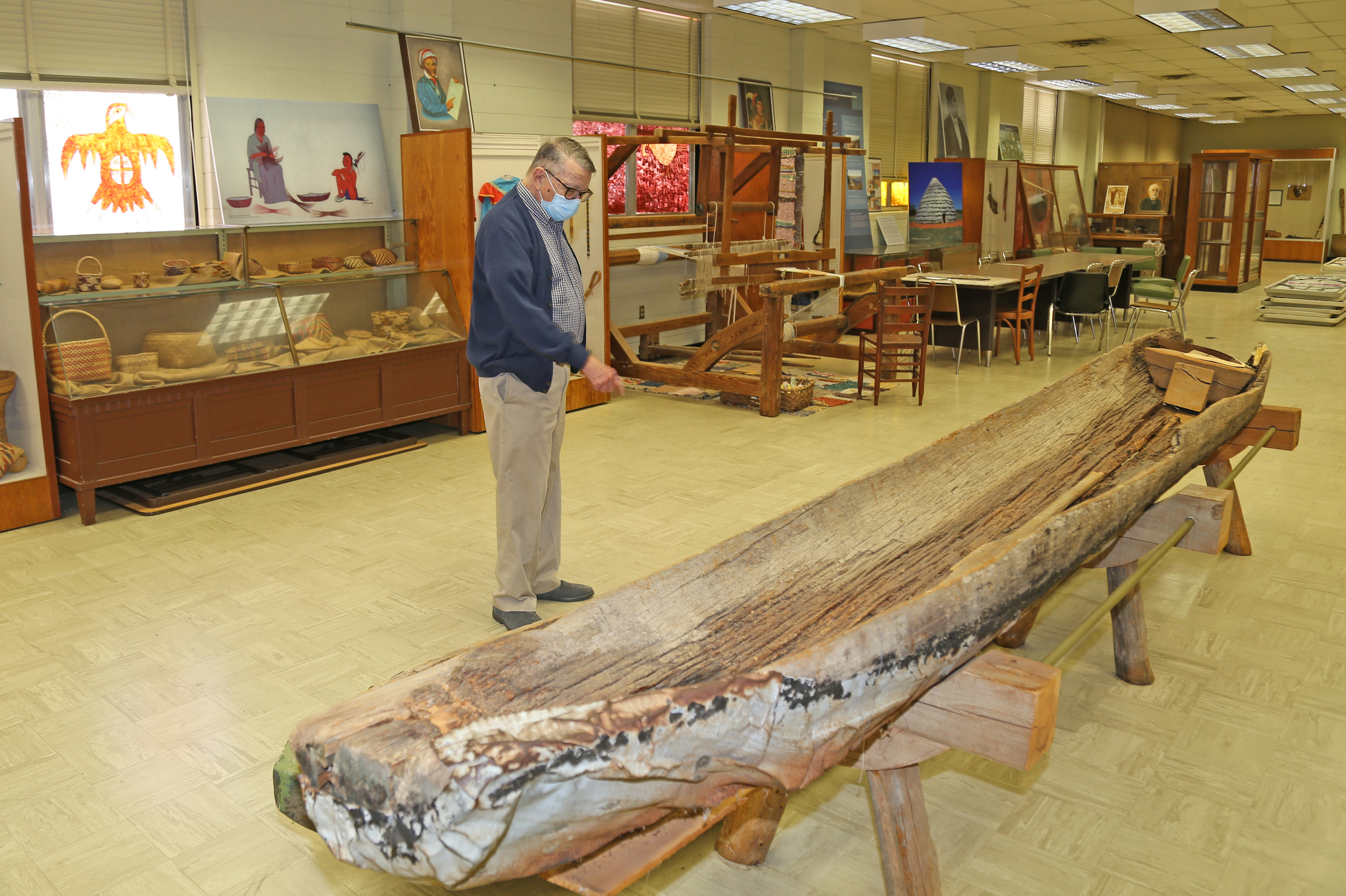NATCHITOCHES – Dr. Hiram “Pete” Gregory begins his 60th year on faculty at Northwestern State University this fall. Gregory began teaching at NSU Sept. 15, 1961, when he arrived as a 23-year-old temporary instructor. When a permanent position teaching anthropology and geography opened up, he decided to stay. He is the longest-serving employee in NSU’s 137-year history. Gregory has taught thousands of Northwestern students who have gone on to be anthropologists, archeologists, nurses, teachers, businesspeople, professionals and even university presidents.
Gregory was born in Vidalia and grew up in Ferriday. His tenure at NSU began shortly after he graduated from Louisiana State University. He is the academic advisor for the Louisiana Creole Heritage Center, the Louisiana Folklife Festival and the Folklife Center at Northwestern and continues to enjoy teaching, listening and learning.
In 2019, Gregory received the Lifetime Contribution to the Humanities Award from the Louisiana Endowment for the Humanities. The award, which has been given annually since 1992, is part of the state humanities council’s effort to honor individuals and organizations who have made significant contributions to the study and understanding of the humanities. In 2018, the Creole Heritage Center presented Gregory with a Lifetime Achievement Award. In 2016, the Louisiana Office of Cultural Development recognized him as Louisiana’s Archaeologist of the Year. Ten years ago, NSU recognized Gregory for 50 years of service and in 1999, he received the President’s Distinguished Service Award.
During a recent conversation, Gregory was less interested in discussing his career accomplishments than generating interest in Williamson Museum, which is 100 years old this year. Housed on the second floor of Kyser Hall, the museum holds over 100,000 artifacts, including art objects and baskets from 41 Native American tribes in the southeastern United States, many that date to prehistory. Gregory has been the museum’s curator almost as long as he’s been on faculty.
Williamson Museum was started in 1921 by George Williamson, a professor of natural sciences, who donated items he had collected – fossils, Native American artifacts and historic items, such as an 18th century flintlock — to the Alumni Association to create a natural history museum on campus. Upon his retirement in 1927, Williamson was named professor emeritus and curator of the collection that was named in his honor. It was housed in Guardia Hall, one of the oldest buildings on campus. Williamson passed away in 1936.
When Gregory arrived in 1961, he was handed the keys by George Stokes, a professor of geography who was later a dean and administrator, and told Gregory that as junior faculty it would be his responsibility to open and close the museum. In 1965, a devastating fire destroyed Guardia Hall, including Williamson’s collection.
“It was a beautiful collection and pretty eclectic, with a rock collection and Indian pots,” Gregory said. “Williamson had collected mostly American Indian stuff and got a bronze medal at the St. Louis Exposition. He published papers on petrified palm wood and had a petrified stump up there. We only saved a couple of shoeboxes of artifacts. We packed up and moved to Kyser and started over.”
The original museum held Chitimacha and Choctaw basketry lost in the fire, Gregory said. The contemporary ethnographic collections have replaced those and much more with many acquired through gifts from individuals, families and tribal members. Williamson Museum serves as a state and federal repository for archaeological collections and Gregory curates collections for the Caddo Nation of Oklahoma and the Tunica-Biloxi Tribe of Louisiana.
“In 100 years, the museum has only had three curators, Williamson, George and me,” Gregory said. “That’s pretty cheap.”
In 1971, Williamson Museum and the NSU Anthropological Society began hosting the annual Native American Crafts Day – commonly referred to as Basket Day — the first Saturday in December to showcase the works of tribal artisans.
Gregory hopes to organize a centennial commemoration of the museum in conjunction with the annual Caddo conference in 2022 and has hopes that faculty could organize lectures at the Museum to draw in visitors. He would also like to establish an advisory board to protect collections so that Native tribes could advise on how to exhibit sacred objects. About 1/3 of the museum contents is owned by the Caddo Nation and is frequently used by researchers who must be granted permission from the tribe to access the artifacts.
But overall, the Museum is underutilized and needs more space, Gregory said. Adjacent labs and a storeroom house long rows of shelves stacked full of boxes of artifacts spanning from prehistory to the mid 20th century, traces of indigenous people, early European colonists and modern tribes.
“A lot of stuff is too old to attach to a tribe,” he said. “Ninety percent of our collections are like that. Our oldest collections date to 5,000 BC. We may have spear points even older than that. They are made of stone and they last. All of that is in storage.”
Gregory recently received a grant from the Forest Service to catalogue materials that agency has collected over the years, some that go back as far as the 1960s. Items and artifacts found on federal land must be catalogued and can be returned to tribes through the Native American Graves Protection and Repatriation Act.
Gregory’s knowledge of history, anthropology and archaeology, particularly as it relates to Native Americans, is encyclopedic. His interest goes back to his childhood, to an artifact his grandmother found.
“She had a spearhead she picked up chopping cotton and when I was a little kid, I found it in her trunk,” he explained. “She said, ‘The Indians made it.’ I said, ‘Who were the Indians?’ and I’ve been asking myself that question ever since.”
Williamson Museum is located in Kyser Hall Room 208 and is open during class hours and by special request. Anyone interested in learning more about the museum can contact Gregory at (318) 357-4364 or email gregoryh@nsula.edu.

